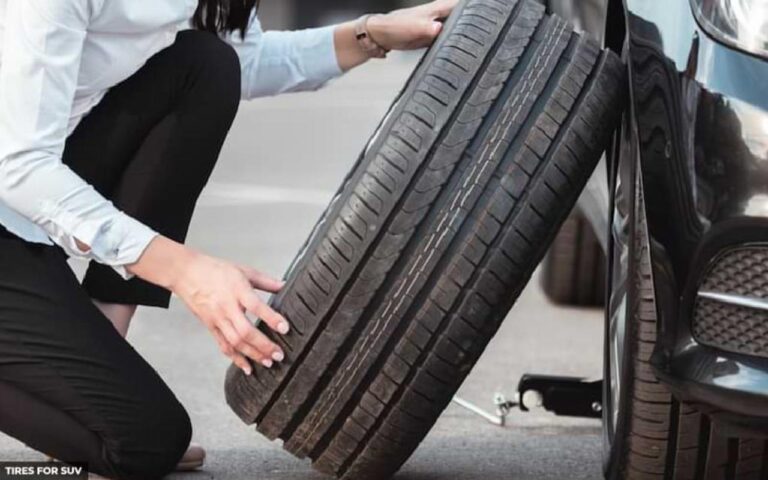Car and other automobile owners from all corners of the world map would agree that there are not many things as irritating and frustrating as flat tires in the middle of a journey.
You would really have to be in God’s good books to escape the fate of being stranded in the middle of nowhere with punctured tires and an important task waiting for you miles away at some point in your life. And this could actually spell doomsday for anybody, at any time!
Considering that a flat tire can happen at any time, even on the glossiest and the smoothest of roads means that you would be risking a lot by ignoring the possibility and probability of being halted by a flat tire. It goes without saying that any person driving an automobile needs to know how to change a flat tire. Here’s how.
Flat Tire Safety
First and foremost, keep in mind the golden advice that we have all received right from our childhoods. Prevention is better than cure! And this gels beautifully with the health of your car tires. Some tire manufacturers offer free flat tire changeout warranties such as Michelin for its X Tour A/S T+H, but is it crucial that every driver is always ready for such a circumstance.
Before you set out on your weekend road trips, or for the neighboring town for an all-important meeting, make sure that you inspect the tires for any suspicious signs. And do not leave this precautionary exercise to the point where you are about to leave for the journey. You might as well keep some time in your hand to get any possible problems with your car’s tires mended.
Of course, we do not assume that the tires would stay lively if they start lively, so the next thing you need to keep in mind is to have the necessary equipment and tools safely tucked in the rear of your vehicle. Really, it is a tough job stopping somebody and asking for the tools when you are stranded on the highway with no tools to change your flat tires.
You would do well to add some useful tools to your tire changing kit that would already be containing the bare necessities in the form of the additional tire, a jack, and a lug wrench. In the next part of the article, we introduce you to all these tools and talk about the additional ones that could help you out of sticky situations on the road.
Tools Needed to Change A Tire
Spare Tire
The spare tire does not need much explaining; this is the savior!
Just keep in mind that the spare tire you have is in good condition, and when you replace a flat tire with a good spare one, do not lose much time before getting the flat tire repaired and replace the position of the spare tire, as you might be in a similar flat tire situation very soon.
Floor Jack
The jack is the instrument that you use to lift the vehicle off the ground slowly, so that you have enough room to move the flat tires out from under the automobile’s body, and fit the spare tires in their place. Surely, there’s no way you can manage the whole thing without a jack, so always keep one.
Lug Wrench
Coming on to the lug wrench now, this is the tool you need to turn out the nuts holding the tire to the vehicle.
Flashlight
Apart from these, you could keep a flashlight to help you when you have a double-headed problem in the form of a flat tire at night.
Gloves
Also, you might like to consider keeping gloves in your kit to make handling a bit easier. You can buy cheap tire equipment easily from internet-based stores and physical automobile parts stores. Enough said about the precautions, let us got on with the real part of the flat tires changing exercise.
Also read our review on ultimate all-season tires: Michelin Energy Saver A/S
Step-by-Step Changing a Flat Tire
Don’t lose any time in stopping the vehicle and pushing it to a safe spot. You really do not want to do the tire changing on a curved road.
- Pull the parking brakes on to keep the vehicle stable, get a brick or two and place it behind the tire in line with the one that goes flat. Also, keep the indication lights on to warn any approaching vehicles.
- Then, grab your flat tire replacement kit and get ready for the job. The first thing you would need to start off is the lug wrench. This is meant to loosen the nuts keeping the tire in place. You might need to take a wheel cover off before you are able to see the lug nuts in some cars. It is suggested that you loosen the nuts rather than taking them off. And just in case you find them too hard to de-bond, don’t hesitate from using your feet to apply the weight on the wrench to make the stubborn nuts move.
- Once you loosen all the nuts (generally there are 4 or 5 of them), it is time to let the wrench rest for a while and take some service from the jack. Different jacks operate in different manners. So, know a little about your jack; it is a very simple thing to do, provided you know how to do it! You would know yourself when you have lifted your car sufficiently high to remove the tire easily, though the suggested height is six inches. Once this is done, you are halfway through the job.
- Time to go to the next step; turn the lug nuts that you loosened a few minutes out using your hands, and keep them all together nearby. Then, hold the flat tire and pull it towards yourself.
- Once it is out, roll it away and roll in the spare tire. Fix in the wheel in the base and push it till you meet resistance.
- Then roll it a little to match the lug nut spots with the corresponding cavities in the replacement tire. Take the lug nuts again and manually turn them in on the tire. Do not use the wrench to tighten them at this point in time.
- After this, reverse the action you undertook on the jack a few minutes earlier, and slowly lower your car.
- Once the wheels are in contact with the ground, take the jack gently off and keep it aside. The jack had served its purpose already, and you are almost ready to start off again. But before that, you need to tighten all the lug nuts perfectly, and there is one thing you need to keep in mind. Do not tighten them in one go, and do not tighten them in order. Partially tighten a nut, and then take up the one on the other diametric end of the circular shape that all the nuts are arranged in. This ensures that all the ends of the wheel are perfectly aligned to the car body.
- After the nuts are tightened in this manner, give another shot at tightening them fully till you meet firm resistance from them, using the same order as before.
- Then, do the clean-up job, i.e., keep all the tools and the flat tire in the car, and see if you are forgetting anything left on the road. And do not forget to get the flat tires serviced up as soon as possible.
Conclusion
In case you have bought a new vehicle, you would really do well to take up a practice flat tires replacement exercise on a free day, so that just in case you face a problem in the middle of a deserted highway, you are able to confidently replace the flat tires and hit the road again, within minutes!
Bon voyage.

